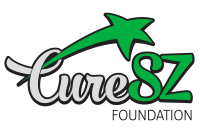Tardive dyskinesia (TD) is a possible abnormal movements side-effect of antipsychotic medications. TD may cause involuntary movements in the face, extremities and body.
After decades of not being treatable, since 2017, FDA-approved treatment for TD is now available. TD movements differ from other involuntary movements including drug-induced parkinsonism, akathisia and dystonia, and TD movements are treated differently.
To find a doctor who will prescribe medication for tardive dyskinesia, expand the map to locate your city (or country), and click on the indicator.
Are you a clinician who prescribes TD meds? Join the Panel here.
Tardive dyskinesia is a side effect of antipsychotic medications which can cause involuntary movements in the face, including lip smacking, grimacing or chewing, and other in voluntary movements in the tongue, lips, jaw and eyes. Other body regions can show random movements including the neck, fingers, arms, legs toes and trunk. In rare cases, TD can affect the diaphragm, causing grunting or barking sounds. These movements often progress from mild to severe.
On the newer antipsychotic medications, TD occurs much less often than in the older antipsychotic medications.
Risk factors for TD include long-duration of antipsychotic medications, older age, female gender, diagnosis of a mood disorder, post-menopaused status, abusing drugs and alcohol, and diabetes.
For 50 years, TD has been untreatable and irreversible. However, research finally paid off and an efficacious treatment for TD has been discovered. Valbenazine was the first drug to be approved by the Food and Drug Administration in April of 2017. Another agent, deutetrabenazine was subsequently approved in August of 2017.

